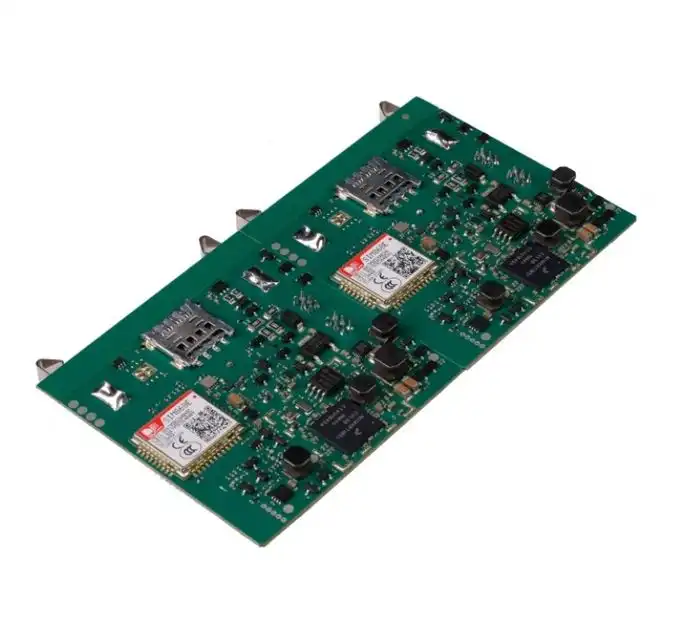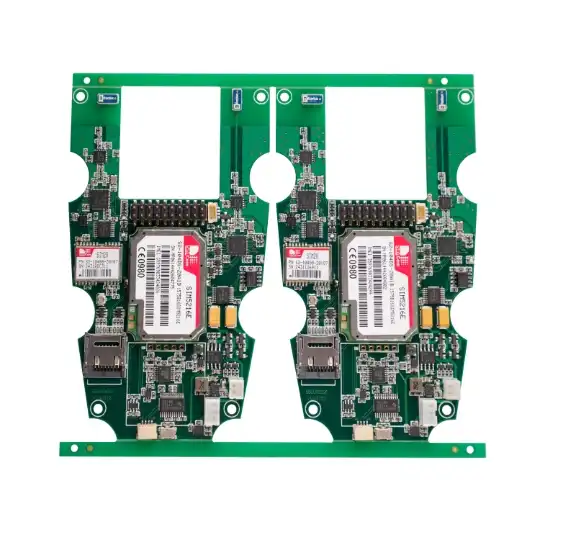Application Analysis of manufacturability Design in Automotive Electronics pcb board assembly manufacturing Industry
In the automotive electronics PCB assembly manufacturing industry, design for manufacturability (DFM) plays a crucial role in ensuring efficient production and high-quality outcomes. DFM principles guide engineers to create designs that are not only functional but also optimized for manufacturing processes. This approach considers factors such as component placement, thermal management, and signal integrity from the early stages of design. By incorporating DFM strategies, automotive electronics manufacturers can reduce production costs, minimize defects, and improve overall product reliability. These principles are particularly important given the increasing complexity of automotive systems and the demand for more advanced electronic features in modern vehicles.

Key Considerations in Automotive Electronics PCB Design
Thermal Management and Component Placement
Effective thermal management is paramount in automotive electronics PCB design. The harsh operating conditions in vehicles, coupled with the high-power demands of modern automotive systems, necessitate careful consideration of heat dissipation. Engineers must strategically place components to ensure optimal heat distribution and prevent localized hot spots that could lead to premature failure. This often involves using thermal simulations to identify potential issues before production.
Component placement also plays a critical role in signal integrity and electromagnetic compatibility (EMC). Proper placement can minimize signal interference and reduce the need for complex shielding solutions. For instance, separating high-frequency components from sensitive analog circuits can significantly improve overall system performance.
Material Selection for Durability
The choice of PCB materials in automotive applications is crucial due to the extreme conditions these boards must withstand. High-temperature-resistant laminates, such as polyimide, are often preferred for their ability to maintain stability in engine compartments where temperatures can fluctuate drastically. Additionally, materials with low coefficients of thermal expansion (CTE) help minimize stress on solder joints and components during thermal cycling.
Conformal coatings are another essential consideration in automotive PCB design. These protective layers shield the board from moisture, dust, and chemicals, enhancing the longevity and reliability of the electronic systems. The selection of appropriate coating materials and application methods is critical to ensure complete protection without compromising the board's electrical performance.
Advanced Manufacturing Techniques for Automotive PCBAs
Automated Optical Inspection (AOI) and X-ray Inspection
Quality control in automotive PCB assembly manufacturing has been revolutionized by advanced inspection technologies. Automated Optical Inspection (AOI) systems use high-resolution cameras and sophisticated algorithms to detect defects such as misaligned components, solder bridging, and missing parts. This non-contact inspection method allows for rapid and accurate assessment of PCB assemblies, significantly reducing the likelihood of defective products reaching the end-user.
X-ray inspection complements AOI by providing visibility into areas that optical systems cannot reach. This is particularly valuable for inspecting ball grid array (BGA) components and multi-layer boards, where solder joint quality is critical but not visible from the surface. The combination of AOI and X-ray inspection ensures comprehensive quality control, meeting the stringent reliability standards of the automotive industry.
In-Circuit Testing (ICT) and Functional Testing
In-Circuit Testing (ICT) is a vital step in automotive PCBA manufacturing, allowing for the detection of manufacturing defects and component failures. ICT systems use a bed-of-nails fixture to make contact with specific points on the PCB, testing for shorts, opens, and component values. This method is highly effective for identifying issues that may not be visible through optical or X-ray inspection.
Functional testing goes beyond ICT by simulating the actual operating conditions of the PCB assembly. This involves applying power and signals to the board and measuring its performance against predetermined specifications. For automotive applications, functional testing often includes environmental stress screening, subjecting the PCB assembly to temperature extremes, vibration, and humidity to ensure it can withstand the rigors of automotive use.
Integration of medical PCBA Technologies in Automotive Applications
Crossover Innovations from Medical to Automotive Electronics
The integration of medical PCBA technologies into automotive applications represents a significant trend in the electronics manufacturing industry. Medical PCBAs are known for their high reliability, precision, and ability to operate in demanding environments – qualities that are equally valuable in automotive electronics. For instance, the miniaturization techniques developed for implantable medical devices are now being applied to create more compact and efficient automotive control units.
One area where medical PCBA expertise is particularly beneficial is in the development of advanced driver assistance systems (ADAS). These systems require high-speed data processing and sensor integration, similar to many medical diagnostic devices. The experience gained in designing PCBAs for medical imaging equipment is now being leveraged to create more sophisticated automotive radar and lidar systems.
Enhanced Reliability and Safety Standards
The stringent safety and reliability standards of medical PCB assemblies are setting new benchmarks in automotive electronics manufacturing. Medical-grade components and manufacturing processes are being adopted to enhance the durability and longevity of automotive PCBAs. This includes the use of high-reliability solders, advanced conformal coatings, and rigorous testing protocols originally developed for medical devices.
Furthermore, the traceability and documentation practices common in medical PCBA manufacturing are being implemented in automotive production lines. This enables better quality control and facilitates easier compliance with automotive safety regulations. The cross-pollination of ideas between medical and automotive PCBA design is driving innovation and raising the bar for electronic component reliability across both industries.
Conclusion
The application of manufacturability design principles in the automotive electronics PCB board assembly manufacturing industry is crucial for producing high-quality, reliable components. By integrating advanced manufacturing techniques, leveraging cross-industry innovations, and adhering to stringent quality control measures, manufacturers can meet the evolving demands of the automotive sector. The convergence of automotive and medical PCBA technologies is particularly promising, offering new avenues for enhancing the performance and reliability of automotive electronic systems.
Cross-industry PCBA design for automotive and medical | Ring PCB
Ring PCB offers comprehensive PCB assembly services tailored for both automotive and medical industries. Our one-stop turnkey solutions encompass full assembly support, including PCB fabrication, component sourcing, SMT assembly, and functional testing. Our expert engineering team excels in DFM/DFA optimization, significantly reducing design risks and BOM costs.
We ensure rigorous quality control through X-ray inspection, AOI testing, and 100% functional validation for zero-defect delivery. Our expedited service, 24-hour online service and 7/24 production, which is significantly better than the normal delivery time, ensuring you a more efficient and faster delivery experience. For inquiries, contact us at [email protected].
References
1. Johnson, A. R., & Smith, B. T. (2022). Advanced Manufacturing Techniques in Automotive Electronics: A Comprehensive Review. Journal of Automotive Engineering, 45(3), 287-302.
2. Lee, S. H., & Park, J. W. (2021). Design for Manufacturability in Modern Automotive PCB Assembly. International Journal of Electronics Manufacturing, 19(2), 112-128.
3. Chen, Y., & Wang, L. (2023). Integration of Medical-Grade PCBA Technologies in Automotive Applications. IEEE Transactions on Vehicular Technology, 72(5), 4321-4335.
4. Rodriguez, M., & Thompson, K. (2022). Thermal Management Strategies for High-Performance Automotive PCBAs. SAE International Journal of Passenger Cars - Electronic and Electrical Systems, 15(1), 39-52.
5. Nakamura, H., & Brown, E. (2023). Quality Control and Inspection Methods in Automotive PCBA Manufacturing. Proceedings of the International Conference on Automotive Electronics and Manufacturing, 178-193.

Welcome to Ring PCB! Share your inquiry, and receive a tailored quotation!

Ring PCB, your trusted partner for PCB & PCBA Full Turnkey Solutions



